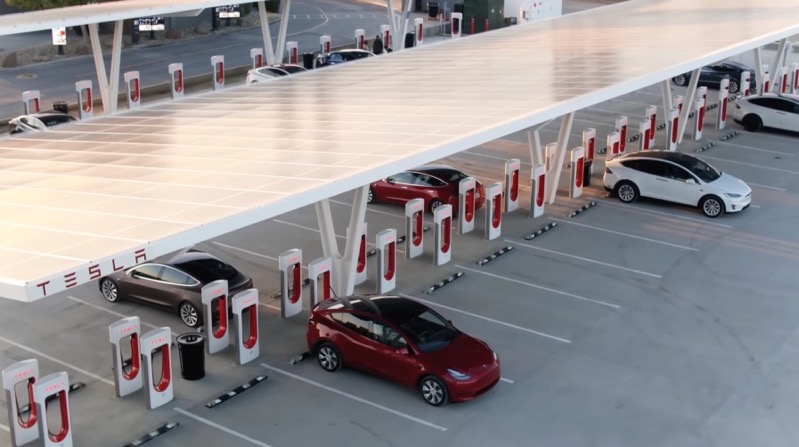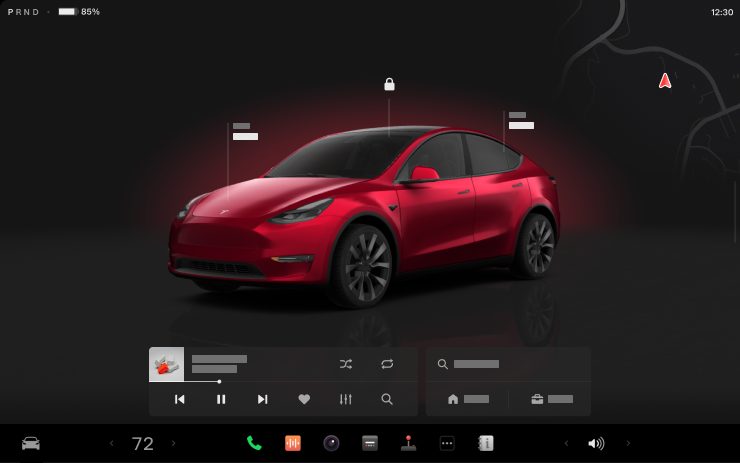
Tesla Leads the Pack in EV Charging Reliability, Says Report

Tesla’s electric vehicle (EV) charging network significantly outperforms its rivals in reliability, a recent E-Vision Intelligence Report by J.D. Power has revealed.
The report highlighted that nearly 21.6 percent of EV drivers could not charge their vehicles at non-Tesla public charging ports in the first quarter of 2023. In stark contrast, only 3.9 percent of Tesla drivers faced issues while using the Tesla Supercharger network.
“When it comes to reliability, no other provider is even close to Tesla,” the report declared.
It’s true. Tesla’s Supercharger uptime is at an astonishing 99.95%. “With more than 45,000 Superchargers, we own and operate the largest fast charging network in the world. Our global network had 99.95% uptime and was 100% renewable in 2022, achieved through a combination of onsite resources and annual renewable matching,” says Tesla’s website.
Tesla’s charging system is steadily becoming the industry standard in North America. Auto giants such as Ford, General Motors, Rivian, and Volvo have agreed to incorporate Tesla’s North American Charging Standard (NACS) charging sockets in their forthcoming EVs. Other major players like Stellantis and Hyundai are contemplating similar moves.
The superiority of Tesla’s Supercharger network is attributed to its vertical integration, offering Tesla control and testing compatibility between vehicle hardware and software and Supercharger hardware and software, according to J.D. Power.
“This enables Tesla to control and test the compatibility between the vehicle hardware and software and the Supercharger hardware and software,” noted Elizabeth Krear, J.D. Power’s Vice President for EV Practice, reports Automotive News.
Nonproprietary networks, however, require the coordination and maintenance by multiple stakeholders, increasing the complexity for non-Tesla charging.
The J.D. Power study also found that Tesla vehicle owners showed the highest satisfaction when it came to public charging. Tesla achieved a score of 734 on a 1,000-point scale, far outpacing the average score of 558 for all other manufacturers.
With around 19,500 ports, Tesla’s Supercharger network is the largest EV charging network in the U.S., compared to approximately 11,500 fast chargers in networks using the Combined Charging System (CCS), the nonproprietary competitor to the NACS.
Tesla’s dominance in the charging network has an added advantage. NACS charging stations, as long as they also include a CCS connection, are eligible for federal subsidies under the Bipartisan Infrastructure Law and the National Electric Vehicle Infrastructure Formula Program, as per a White House announcement on June 9.
The J.D. Power report highlighted that addressing charging issues is a vital aspect of transitioning to electric vehicles.
J.D. Power stated, “Lack of public charging infrastructure has been the top consumer barrier to EV adoption for the past 12 months, followed by related issues involving range anxiety, time required to charge and inability to charge at home or work.”
Krear noted that if the Tesla user experience can be replicated for non-Tesla EV users, the adoption of NACS by non-Tesla manufacturers could improve the overall charging experience and reliability.
So far, we’ve seen Ford, GM, Rivian, and Polestar adopt Tesla’s NACS. Charging networks such as Electrify America have also jumped on board, hinting at parent company Volkswagen next. More automakers are expected to follow.

